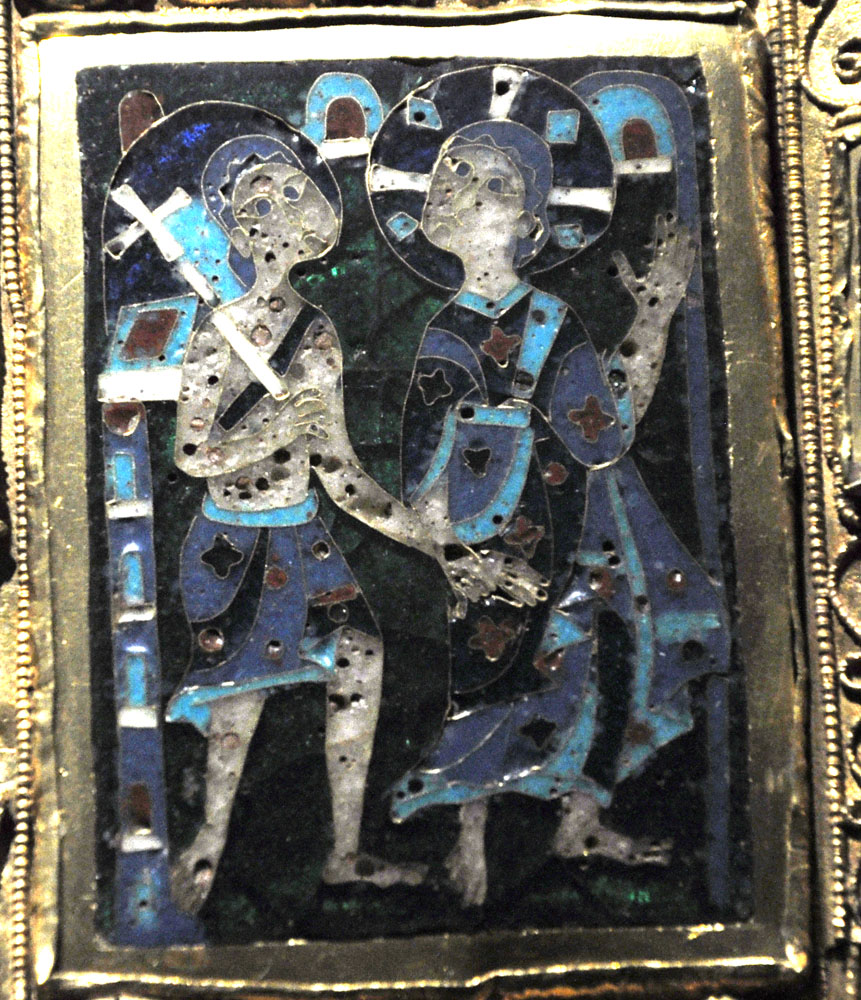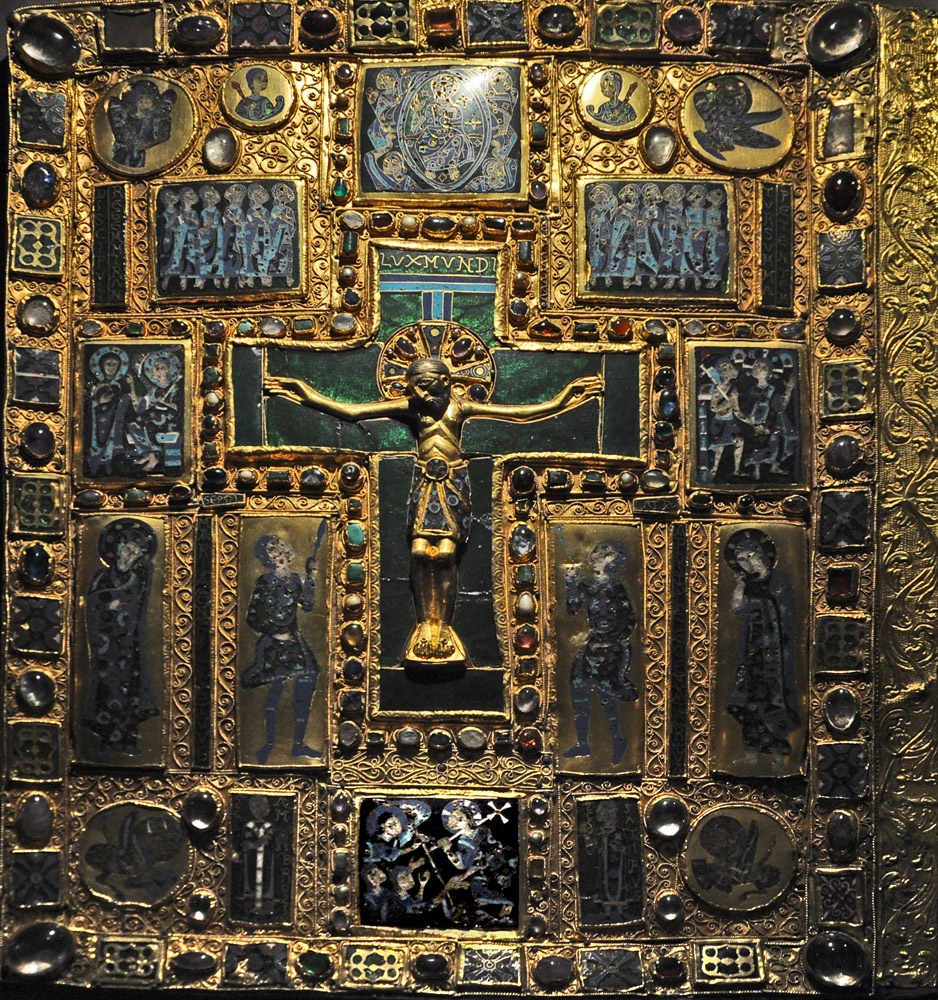The panels above and beneath the crucifix extend its meaning: below, the Anastasis (see detail); above, the Ascension, witnessed by the two sets of Apostles in the lateral panels. Left and right of those panels, the two narrow insets are inscribed discipuli regem mirantur summa petentem, "the disciples watch the king attaining to the heights."
 The panel right of the crosspiece draws a further lesson from the crucifix. While Simon of Cyrene carries the cross, Jesus walks with him as one would walk with a friend, holding his hand and raising the other hand in the gesture that signifies speech. The reference thus is not just to Simon's function in the Passion but to Jesus' words in Matthew 16:24, "If any man will come after me, let him deny himself, and take up his cross, and follow me." Left of the crosspiece, one of the angels sitting in the tomb asks Mary Magdalene, "Woman, why weepest thou?" (John 20:13). Together, the left and right panels speak to the response encouraged in the viewer, not tears but a confident embrace of one's cross, a "burden light" (Matthew 11:30) with Christ as one's companion.
The panel right of the crosspiece draws a further lesson from the crucifix. While Simon of Cyrene carries the cross, Jesus walks with him as one would walk with a friend, holding his hand and raising the other hand in the gesture that signifies speech. The reference thus is not just to Simon's function in the Passion but to Jesus' words in Matthew 16:24, "If any man will come after me, let him deny himself, and take up his cross, and follow me." Left of the crosspiece, one of the angels sitting in the tomb asks Mary Magdalene, "Woman, why weepest thou?" (John 20:13). Together, the left and right panels speak to the response encouraged in the viewer, not tears but a confident embrace of one's cross, a "burden light" (Matthew 11:30) with Christ as one's companion.
Flanking the lower section of the cross are four figures traditionally placed there: Mary and John on the far left and far right, and Longinus and Stephaton with their spear and sponge. Flanking the Anastasis below are small images of St. Ambrose and St. Satyrus. Ambrose was bishop of Milan in the 4th century and is the city's patron saint. Satyrus was his brother.
Roundels with the symbols of the evangelists are in the four corners. Left and right of the Ascension are smaller roundels portraying two women martyrs with their palm branches.
For a better look at the small panels, view this image in full resolution.
Read more about images of crosses and crucifixes.
